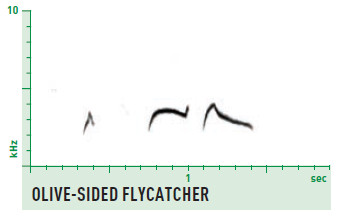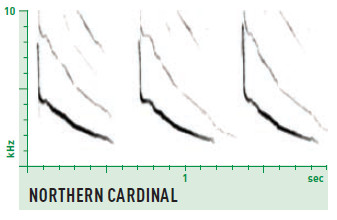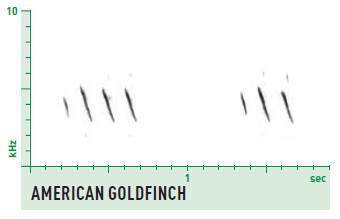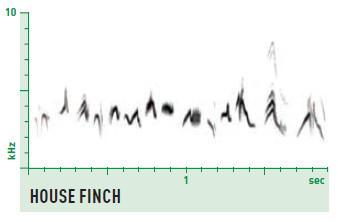The four basic patterns of repetition and speed
(Peterson Field Guide to Bird Sounds, interactive version of pp. 8-9)
The key to hearing and visualizing the repetition and speed of bird sounds lies in two questions:
- Does the bird ever sing the same note twice?
- Are the notes slow enough to count, or too fast to count?
Together, these two questions make it possible to identify four basic patterns of bird sound: phrases, series, warbles, and trills. Phrases and series are slower sounds, with individual notes slow enough to count; phrases contain unique notes that are not repeated, while series consist of one note repeated over and over. Warbles and trills are faster versions of phrases and series, with notes too fast to count (faster than about eight notes per second). At this speed, unique notes run together into a single warbled sound, and similar notes merge into a trill.
Even tremendously long and complex bird songs can be described as a combination of phrases, series, warbles, and trills. These four patterns form the most important building blocks of the visual index in the Peterson Field Guide to Bird Sounds.
The following examples illustrate these four basic patterns with real spectrograms:
Examples of phrases (unique notes, slow enough to count)
Examples of series (repeated notes, slow enough to count)
Examples of warbles (unique notes, too fast to count)
Examples of trills (repeated notes, too fast to count)
(Next: pp. 10-11: Changes in speed and pitch of whole songs / Complex series)








